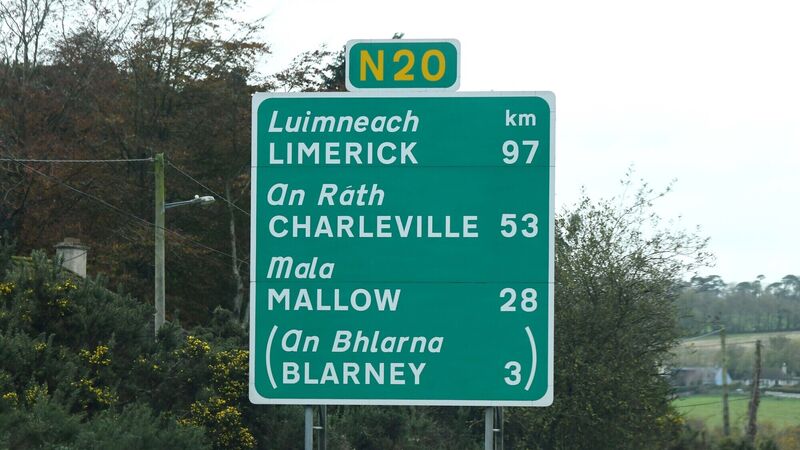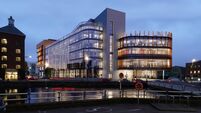Dr Declan Jordan: Cork to Limerick rail and greenway plans 'a boon' for the region

The proposed motorway between Cork and Limerick was an over-engineered solution to a problem that didn’t exist. Picture: Denis Minihane
For too long in Ireland, connectivity has been a code word for motorways and new and wider roads. Our transport policy has consistently ignored the evidence that more and more roads simply lead to more and more car journeys.
Hopefully the announcement of the N/M20 road upgrade and integrated travel options between Limerick, Cork, and the towns in between signals an end to the dominance of roads as our default transport option.
The plans for connecting our second and third largest cities must be broadly welcomed by those of us that criticised the previous, excessive full motorway option.
The councils have to be commended for listening to the submissions that argued that the safety concerns and the need to free the towns along the route from the choking grip of traffic did not require a full motorway.
The proposed motorway was an over-engineered solution to a problem that didn’t exist. It was inconsistent with our climate action targets for transport and attempts to reduce our car dependency.
On top of that, the likely cost was increasing steadily. A dual carriageway that uses 40% of the existing road and that by-passes the towns along the route is a far superior option by any measure.
The new road will remove those parts that have accounted for the excessive road fatalities and crashes and also ease the choking traffic in Charleville and Buttevant.
This is good news for the residents and businesses in those towns, whose main streets will now be reclaimed from the logjam of private cars.

The bypasses are an opportunity for these towns to have public realms that entice people to spend time shopping, socialising, and visiting.
The provision of more frequent, no-change rail services between Cork and Limerick is long overdue and provides huge potential for the region.
It will be, for many, a better alternative to private car journeys between the two cities, linking the centre of Cork city to the centre of Limerick city — and the new Colbert Quarter.
The need to change trains at Limerick Junction — the platform of which is possibly the coldest place in Ireland — is a significant impediment to greater use.
The journey time is longer than it needs to be because of the co-ordination of the need to make connections with the Cork and Dublin bound trains.
The provision of a greenway along the route is a potential boon for many of the towns along the route, just as the greenways already in place countrywide have been an attraction to domestic and foreign tourists.
Ireland’s tourism offering relies on experiences and activities that greenways can provide.
Although the new proposal for the N/M20 is welcome and shows the benefit of engaged public consultation, there are still some issues that need to be kept front and centre.
The upgraded road can’t become another enabler of sprawl; the National Development Plan and its emphasis on compact city and urban growth must remain the primary focus of development.
It would be too easy, and a mistake, to have more relaxed planning in Limerick and Cork councils along the new route, increasing car commuting into the already congested cities.
While the addition of a no-change rail line and a greenway to the proposed road upgrade is very welcome, they cannot be an attempt to greenwash the road development.
Indeed, providing a frequent and quicker rail connection between the cities may reduce private car traffic and mitigate the road’s safety and environmental issues.
The rail connection can be delivered relatively quickly and there is no need for these improvements to be delayed by the planning and land purchases required for the road upgrade.
For the greenways to make their full contribution, it is necessary that they enable commuting as well as tourism.
A cycle from Limerick to Cork may be asking too much for a daily commute, but the prevalence of electric bikes now make commuting distances of up to 20km very manageable for most people.
The proposed greenways must have safe and segregated connections to the city centres and to the towns and villages along the way; otherwise they will simply be a destination to which people drive to take some exercise.
The reaction to the proposal for connecting Cork and Limerick has been positive, though many are wary based on experience of active and public transport infrastructure delays.
It is important that we see movement on those elements, like rail and greenway, that can happen quickly.
- Dr Declan Jordan is Senior Lecturer in Economics at Cork University Business School












